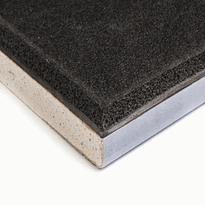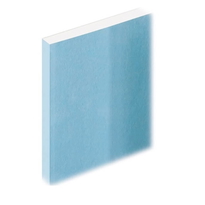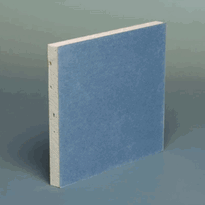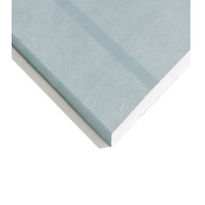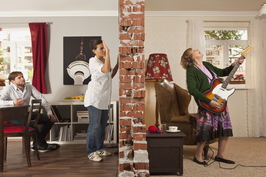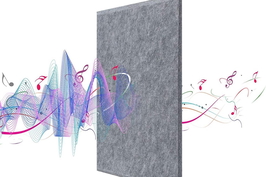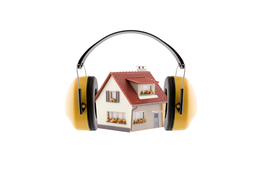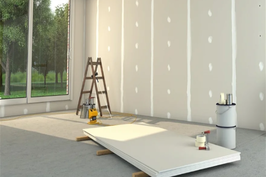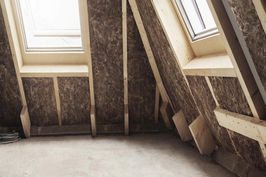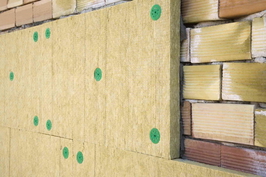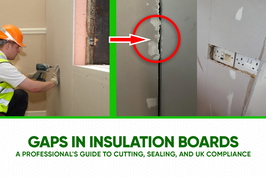Travis Perkins Sound Proof Plasterboard
Travis Perkins offers a range of soundproof plasterboards designed to enhance acoustic insulation within buildings. These products are formulated to meet industry standards for noise reduction, making them suitable for various construction applications.
Our soundproof plasterboards typically feature high-density materials, such as specialised gypsum cores, which effectively minimise sound transmission. They are available in different thicknesses, commonly 12.5mm, to optimise acoustic performance and adapt to specific project requirements.
Proper installation plays a vital role in maximising soundproofing. Sealing joints meticulously and employing appropriate decoupling techniques are essential steps to ensure optimal sound attenuation.
For detailed specifications, compliance standards, and guidance on ideal applications, further information will clarify how these products can significantly boost acoustic performance in your construction projects.
Understanding Acoustic Performance and Benefits
Understanding the acoustic performance of soundproof plasterboard involves analysing specific metrics and how various installation factors influence overall effectiveness. The primary measure, the Weighted Sound Reduction Index (Rw), quantifies airborne sound insulation; higher Rw values indicate better soundproofing, ranging from approximately 43 dB for single-layer configurations to 56 dB with double layers on larger studs incorporating insulation. The Rw value is tested and certified according to UK and European standards, ensuring consistent measurement criteria. A single 15mm acoustic plasterboard can achieve around 49 dB Rw, offering both sound absorption and fire resistance. Performance varies significantly depending on assembly details such as stud size, cavity insulation like mineral wool, and the number of plasterboard layers. When correctly installed, with appropriate construction techniques such as decoupling systems, acoustic plasterboards effectively reduce noise transmission. These factors combine to produce a dedicated, functional solution aligned with building regulations and occupant comfort.
Key Features and Installation Considerations
The physical properties of soundproof plasterboard considerably influence both its installation process and its overall acoustic performance. Typically manufactured from gypsum with a specialised blue or brown finish, its thickness generally ranges from 12.5 mm to 15 mm.
This thickness impacts the weight of each sheet, which can vary from approximately 28.8 kg to over 54 kg per sheet, and also affects its sound attenuation capacity.
Soundproof plasterboard is designed primarily to reduce noise transfer between rooms. Its effectiveness is maximised when combined with mineral insulation and acoustic sealants, which work together to enhance soundproofing performance. The tapered edges of these boards facilitate seamless joint finishing, ensuring a smooth surface once the installation is complete.
Handling these panels requires care due to their weight. For safety and efficiency, multiple workers may be needed during transportation and installation. The common method involves scoring the plasterboard along a straight edge and snapping it to size, then fitting the panels into the wall framework.
Proper sealing of the joints with suitable fillers and tapes is essential to maintain the integrity of the acoustic barrier.
For environments with higher humidity, moisture-resistant variants are available to prevent damage and maintain performance over time. Fire-retardant options are also offered to improve safety standards, making these boards suitable for a variety of settings.
Comparing Top Brands and Product Options
When comparing leading brands like Knauf and British Gypsum for soundproof plasterboard, several key differences come into focus that can influence their suitability for particular building projects.
Knauf’s Sound Panel features moisture resistance, is lighter at approximately 28.8 kg per sheet, and doesn't possess fire retardant properties.
Conversely, British Gypsum’s Gyproc SoundBloc weighs around 33.9 kg, provides fire resistance, and delivers superior acoustic performance with over 90% sound reduction.
These differences can be summarised as follows:
British Gypsum prioritises fire safety and acoustic blocking but doesn't offer moisture resistance.
Knauf emphasises moisture resistance and impact strength but lacks fire retardant certification.
Both brands supply standard 12.5 mm thick boards in sizes of 2400 mm by 1200 mm, with options available for specialist requirements.
Understanding these distinctions helps in selecting the most appropriate material to meet specific safety, acoustic, and environmental standards in UK building projects.
Ensuring Compliance and Cost Efficiency
Regulatory compliance is a critical factor when selecting soundproof plasterboard for building projects in the UK. Products must satisfy specific standards to guarantee safety, performance, and legal adherence. Travis Perkins offers boards that comply with EN 520 standards, including Types A and D, aligning with European building regulations for both acoustic performance and fire resistance.
Specialist soundproofing boards such as Knauf Sound Panel and Gyproc SoundBloc are designed to meet UK-approved standards, including Document E, which governs sound insulation in buildings. Careful selection of suitable boards involves evaluating properties like fire-retardant features, insulation capacity, and certification ratings such as BES 6001, which indicates responsible sourcing and environmental considerations.
Balancing cost and compliance requires a thorough understanding of product specifications. Higher-density boards generally provide improved soundproofing, albeit at increased initial costs. Integrating these materials early in the project design phase can lead to reduced long-term expenses, ensuring adherence to legal requirements while maintaining cost efficiency.
Feature |
Consideration |
| Compliance Standards | EN 520, Approved Document E |
| Fire Resistance | Fire-retardant versus non-fire-retardant options |
| Certification | BES 6001 ('Very Good') |
| Cost and Performance | Balancing thickness, weight, and costs |
Ample white space in documentation enhances readability, aiding in clear communication of complex compliance and cost considerations. When selecting soundproof plasterboard, prioritising both regulatory adherence and budget management ensures optimal performance and legal safety standards are met throughout the construction process.
Conclusion
Selecting the appropriate Travis Perkins soundproof plasterboard requires a clear understanding of acoustic performance, installation procedures, and compliance standards. Carefully comparing product features and brand options ensures optimal sound reduction and cost efficiency. By following detailed guidelines and considering specific project requirements, professionals can achieve effective noise control solutions that meet regulatory standards. This approach guarantees a durable, high-performance finish suitable for diverse construction environments, emphasising the importance of informed decision-making and precise execution for lasting results.
